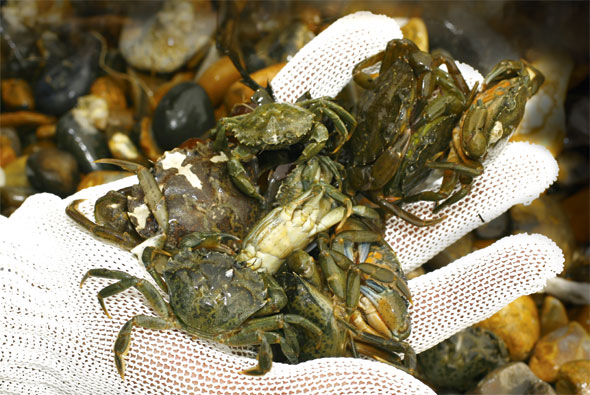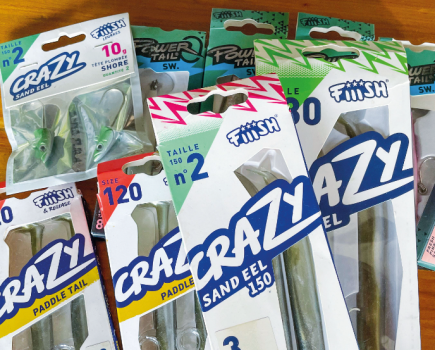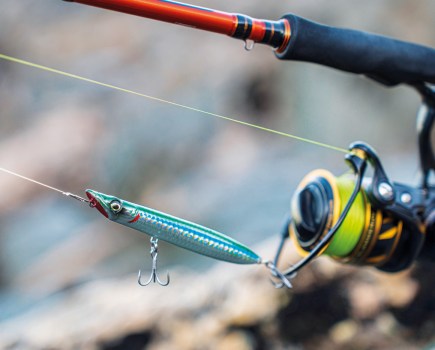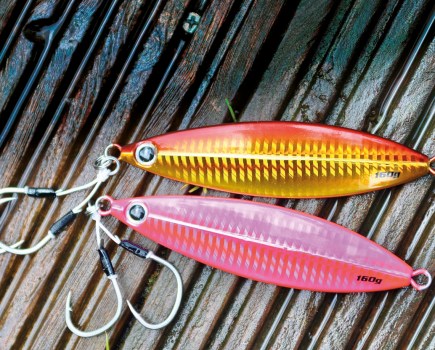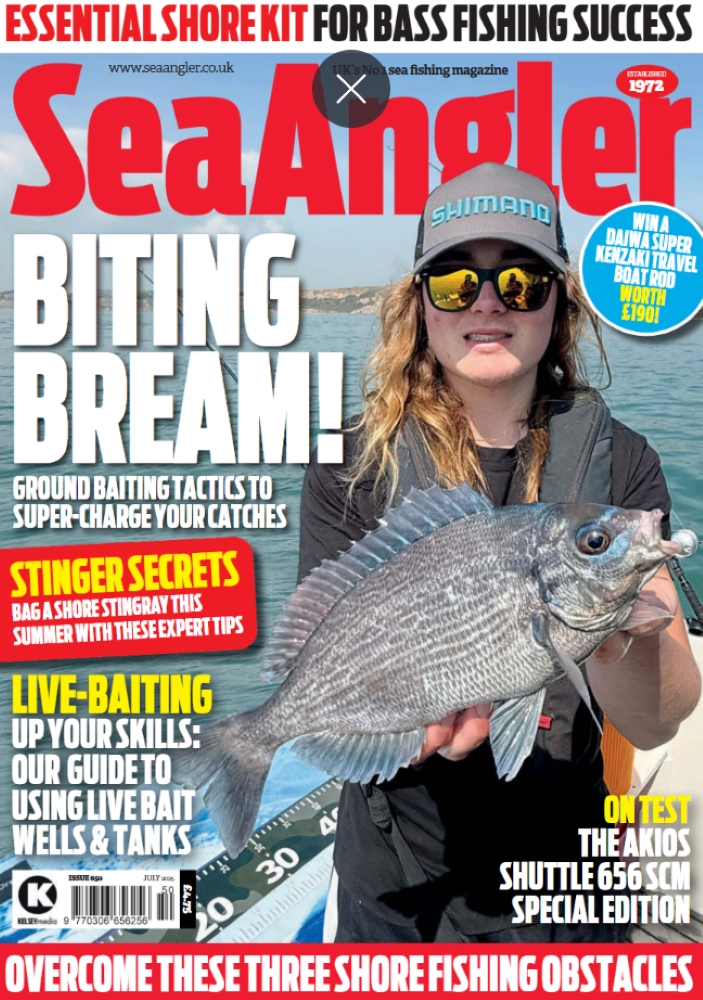Ravenous shore crabs can steal your bait before the fish can get to it. You can move or try to outsmart them by using floating beads, tough bait wraps or even protecting them in mesh, says contributing editor Alan Yates
The most effective way to beat crabs is to check out the range at which they are feeding. If the bait is being removed then shorten the cast. If it isn’t being touched, lengthen it.
Sounds simple, but lots of anglers spend countless hours fishing without bait on their hooks because they fish timed casts and only react to bites. Your first cast will usually tell you how active the crabs are and from then on you can adjust your casting range to improve the bait’s survival time. It is common on many venues to find that crab activity ceases the minute the fish come on the scene – something many anglers are unaware of.
In extreme situations there are a number of solutions, and the easiest is to position floating beads as close to the bait as possible. This method works for some species, like flounders and plaice, because it lifts the bait away from the sea bed where the crabs can’t get it. There could be a problem, because crabs can swim, but floating beads do make it more difficult for the crabs to remove bait.
There are lots of buoyant beads available and they come in various sizes and bright colours. Site the beads as close to the bait as possible using a stop to hold them in place.
Floating beads work well most of the time, but there are species that won’t swim away from the sea bed.
Species that do include mackerel, garfish, bream, pollack, pout, scad, bass and coalfish.
You can also use a flounder spoon and retrieve the bait slowly over the sea bed. This method can work well in estuaries where hungry crabs can clean hooks of bait in minutes. Various beads can be added to the hook snood to introduce colour, noise or lift.
When you sense a bite, stop reeling and pause for the fish to take the bait.
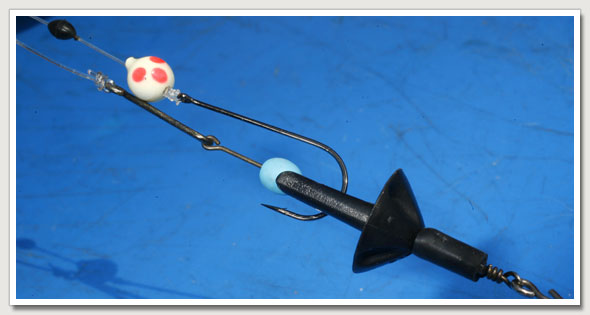
CRAB -RESISTANT BAITS Discover the best choices for your hook
Some hookbaits are more crab-resistant than others, but some tough baits aren’t all that popular with some species. Here’s how I rate them:
Peeler crabs: Although crabs definitely eat crab meat, there are times when the flesh will be ignored, especially when the crabs are peeling and the cocks are looking for a mate. Peeler is a tough bait that most fish like to eat. Scores 8/10
Fish: These seem to be instant crab attractors and they don’t last that long if used in small slivers. Cutlets of small mackerel are much better, but mount them skin side out to slow the rate the crabs can peck it away. Scores 6/10
 Worms: Easy prey for crabs. Being soft they can be removed in minutes. If you are fishing an estuary for flounders, try the floating bead trick, adding a head of the toughest and biggest ragworm you have in your bait bucket. You can also strap several lugworms together on a baiting needle using elastic cotton to form a tough worm sausage. Scores 4/10
Worms: Easy prey for crabs. Being soft they can be removed in minutes. If you are fishing an estuary for flounders, try the floating bead trick, adding a head of the toughest and biggest ragworm you have in your bait bucket. You can also strap several lugworms together on a baiting needle using elastic cotton to form a tough worm sausage. Scores 4/10
Squid: Perhaps the most crab-resistant bait. However, many fish, other than cod, bass and congers, will turn their noses up at it. Scores 3/10
Sandeels: Fairly robust and will withstand crab attacks, especially if whipped on the hook. Another way to toughen it up is to wrap it in squid, while a worm whipped alongside a sandeel is a great cocktail. Use elastic cotton to strap the worm the length of the sandeel for a parallel cocktail. Scores 7/10
OFF-THE-WALL OPTIONS Not as bizarre as you might think
Try a float-fished soft crinkly crab, one that has already peeled and is still soft.
Hook it through the side or rear shell so it stays alive and suspend it under a float for bass when fishing from a groyne or pier. A tail-hooked prawn attracts lots of species and is deadly when freelined or fished live under a float. A live sandeel can be presented in the same way.
PROTECTION IN A PACKET Time for armour plating
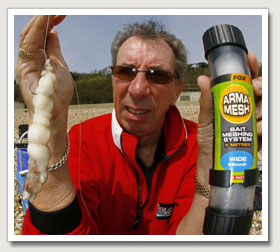 Carp anglers have long used a soluble mesh bag or net to deposit particle baits alongside their hookbait. Now they are experiencing much the same bait-robbing problem as us, but from small catfish.
Carp anglers have long used a soluble mesh bag or net to deposit particle baits alongside their hookbait. Now they are experiencing much the same bait-robbing problem as us, but from small catfish.
They have found a way of protecting their baits by using Arma Mesh, a tough material that doesn’t dissolve and can also be used by sea anglers to keep crabs off sea baits.
There are various ways to increase a large bait’s staying power. Wrapping a prepared crab or fish bait inside a squid mantle is one. The procedure is to clean the skin and fins from a calamari squid, lay it flat and bash it with the knife handle to perforate it, which allows the scent to escape. Load the main hook (a Pennell rig is best) with the squid and then use elastic cotton to wrap the squid around the crab in a sausage.
Use Arma Mesh to encase the bait. Then nick the top sliding Pennell hook in the top of the bait to support it and the mesh. This adds extra protection to your bait from bait thieves. Change the bait every cast.
Another method is shown below.
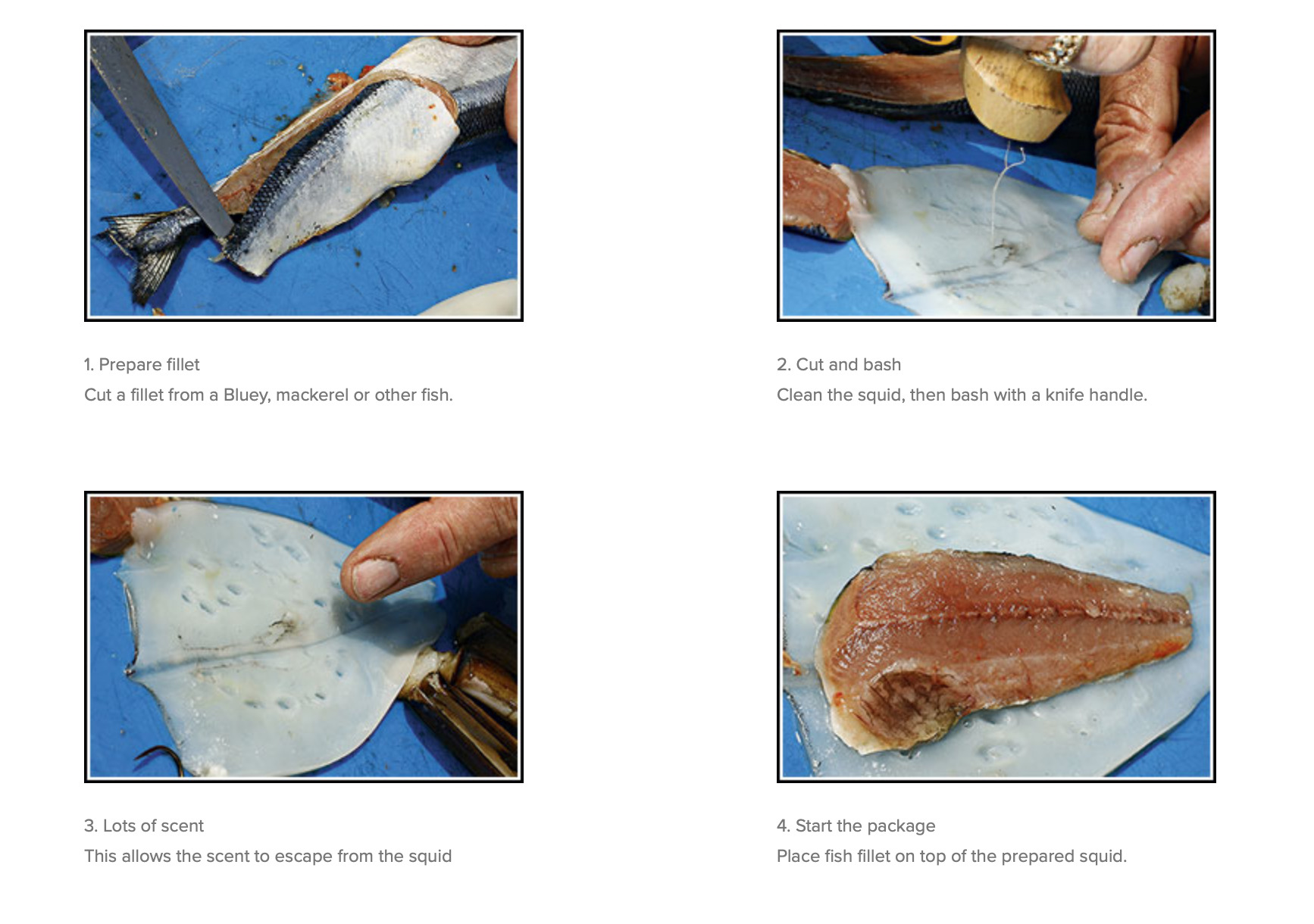
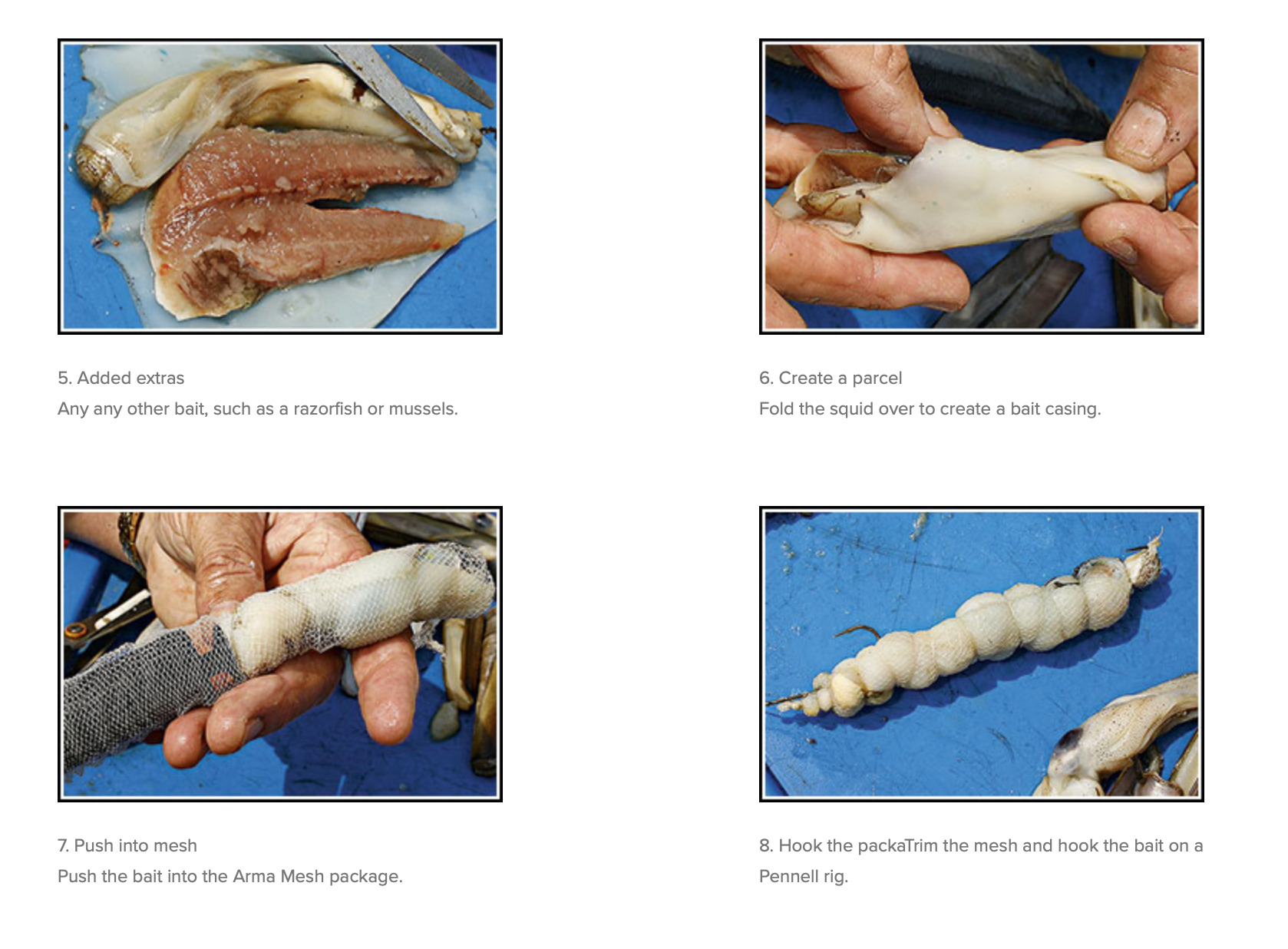
STOP THE SPIDERS RUINING YOUR LINE
Make life tough for these bait robbers
There is no real answer to spider crabs nipping through mono snoods as they devour your bait, other than to check snoods regularly for damage. If you are fishing for the larger species, then increase the diameter of the snood line and use tougher fluorocarbons.
Continental anglers use a short solid wire biting trace to protect their rigs and you can make one by using a short Gemini Genie boom clipped directly to the hook.
Alternatively, a short biting trace of 80lb Spider wire will make the rig relatively crab-proof.

